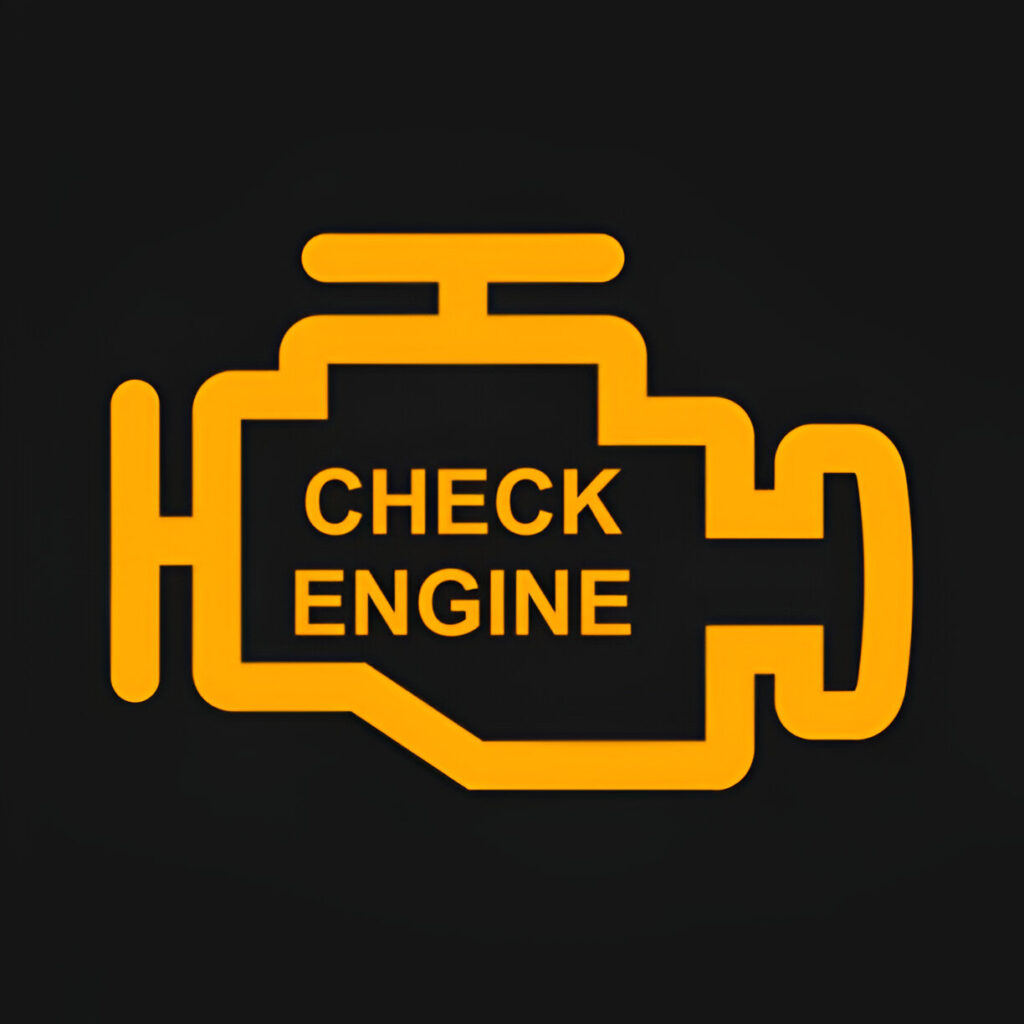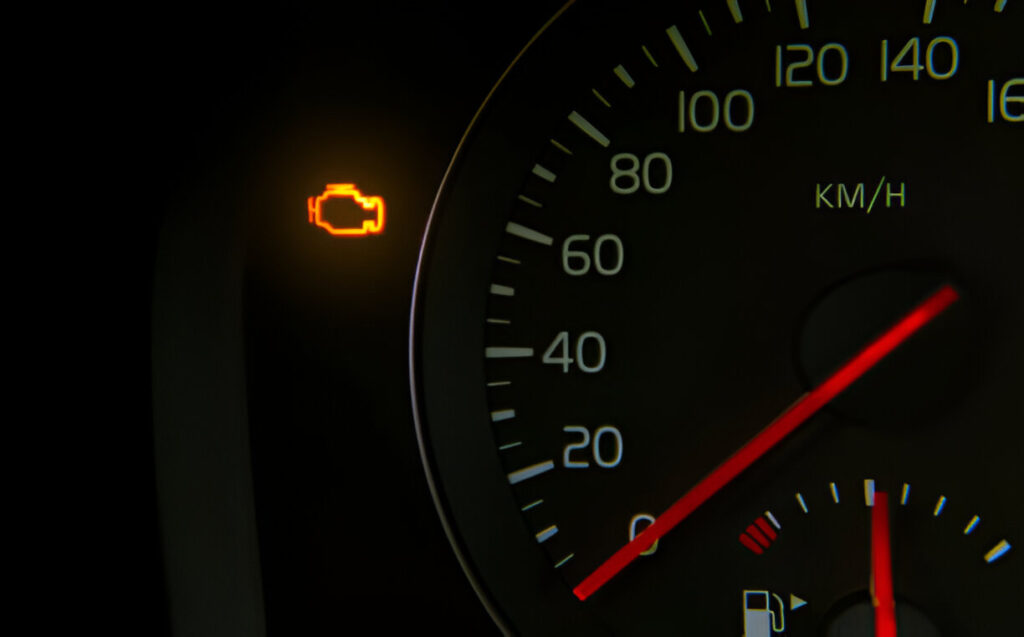Yes, a check engine light will usually cause your car to fail an emissions inspection. The issue must be fixed before the light turns off and the vehicle can pass. Some states may allow safety inspection without considering the light, but it’s best to address the problem.
The check engine light is one of the most dreaded warnings for drivers. When it illuminates, it signals that your vehicle’s computer has detected an issue. But what does this mean for your vehicle inspection? Many states and localities require periodic vehicle inspections to ensure that cars meet safety and environmental standards. A check engine light can be a serious problem, especially if you’re due for inspection.
In this blog, we’ll dive into whether a check engine light will fail an inspection, the underlying causes of this light, and what you can do about it.

Contents
- 1 The Role of the Check Engine Light
- 2 Vehicle Inspections: Safety vs. Emissions
- 3 Will a Check Engine Light Fail Inspection?
- 4 Frequently Asked Questions
- 5 Conclusion
The Role of the Check Engine Light
The check engine light (CEL), part of your vehicle’s onboard diagnostics (OBD) system, monitors various components of the engine and emissions system. When the system detects an issue, it sends a signal to the dashboard light, alerting the driver that something is wrong. The problem could range from a minor glitch, like a loose gas cap, to a significant issue such as a failing catalytic converter.
There are two types of check engine lights:
- Steady Light: Indicates a less urgent problem. The car may be safe to drive, but it still requires attention.
- Flashing Light: Indicates a serious issue, usually related to engine misfire, which could lead to damage if not addressed immediately.
Vehicle Inspections: Safety vs. Emissions
Most states in the U.S. mandate two types of vehicle inspections: safety inspections and emissions inspections.
- Safety Inspections: Focus on the mechanical integrity of the vehicle. This includes checking brakes, lights, tires, windshield wipers, and other critical systems.
- Emissions Inspections: These tests assess how much pollution your car is emitting. It ensures that your car meets federal and state emissions standards.
The check engine light primarily affects emissions inspections because it is closely tied to the vehicle’s emission control system. When the CEL is illuminated, it usually means that your car is producing more pollutants than it should.
Will a Check Engine Light Fail Inspection?
The answer depends on where you live and the type of inspection. Here’s a breakdown:
1. States with Combined Safety and Emissions Inspections
In some states, like New York, Pennsylvania, and Virginia, cars must pass both a safety and emissions inspection. If your check engine light is on, your vehicle will almost certainly fail the emissions part of the inspection. The OBD system is designed to detect problems that could lead to higher emissions, and an illuminated CEL suggests that there’s an emissions-related issue. In these states, your car cannot pass inspection until the issue causing the light is resolved.
2. States with Separate Inspections
Some states, such as Texas, perform separate inspections for safety and emissions. While the check engine light might not affect the safety inspection, it will still result in an automatic failure during the emissions test. For example, Texas allows cars from counties without emissions testing to pass the safety inspection with an illuminated check engine light, but if you live in an area that requires emissions testing, you’ll fail until the problem is addressed.
3. States with No Emissions Testing
In states like Michigan or Florida, which do not require emissions testing, the check engine light is less of an issue. As long as the problem isn’t directly tied to the safety of the vehicle, you might still pass your inspection even with the CEL illuminated. However, even if your state doesn’t require emissions testing, it’s always a good idea to address the CEL as it could be an indicator of a more serious underlying problem.
Why is the Check Engine Light a Problem for Emissions Testing?
The check engine light usually indicates that your car is failing to meet emissions standards. During emissions testing, most states use the OBD-II system to scan the vehicle’s onboard computer for stored trouble codes. If the system detects any fault codes related to emissions, the car will automatically fail.
Common emissions-related issues that trigger the check engine light include:
- Oxygen Sensor Malfunction: A faulty oxygen sensor can cause an imbalance in the fuel-air mixture, leading to increased emissions and poor fuel economy.
- Catalytic Converter Issues: The catalytic converter helps reduce harmful emissions, and any malfunction in this system can cause your car to fail emissions testing.
- EVAP System Problems: The evaporative emissions control (EVAP) system prevents fuel vapors from escaping into the atmosphere. A problem with the EVAP system can trigger the check engine light.
- Mass Airflow Sensor Failure: This sensor measures the amount of air entering the engine, and a failure can cause poor performance and increased emissions.

What to Do If Your Check Engine Light is On Before an Inspection
If your check engine light is on before a vehicle inspection, it could cause your car to fail. Here’s what you should do before heading to the inspection station:
1. Diagnose the Problem
The first step in addressing the check engine light is to find out what’s causing it. Many auto parts stores offer free OBD-II scanning services, where they’ll read the trouble codes stored in your car’s computer. This will give you an idea of what’s wrong and how serious the issue is.
2. Fix the Problem
Once you know what’s causing the light to come on, the next step is to fix it. Some issues, like a loose gas cap, can be resolved quickly and cheaply. More serious problems, like a faulty catalytic converter, can be costly to repair. In either case, the problem must be resolved before your vehicle can pass inspection.
3. Drive the Car After Repairs
After fixing the issue, it’s important to drive your car for a few days before going in for inspection. The vehicle’s onboard computer needs time to reset and verify that the problem has been fixed. If the issue is resolved and the light doesn’t come back on, you should be ready for your inspection.
4. Check Readiness Monitors
Modern cars have readiness monitors that track the status of various emission control systems. Even if the check engine light is off, your car can still fail an inspection if the readiness monitors haven’t completed their self-tests. You can check the status of these monitors with an OBD-II scanner.
5. Get a Waiver (If Applicable)
Some states offer emissions test waivers if the cost of repairs exceeds a certain threshold. For example, if your car needs expensive repairs and you’ve already spent a certain amount trying to fix the problem, you may qualify for a waiver, allowing you to pass the inspection temporarily.
Frequently Asked Questions
Here are some FAQs about check engine light and vehicle inspection –
1. Can I pass inspection with the check engine light on?
In most cases, you cannot pass an emissions inspection with the check engine light on. However, in some states that only require safety inspections, you may still pass if the CEL doesn’t indicate a safety-related issue.
2. How much does it cost to fix the check engine light?
The cost varies widely depending on the problem. A loose gas cap could be a free fix, while a faulty catalytic converter might cost over $1,000 to replace.
3. How can I turn off the check engine light before inspection?
Simply clearing the code without fixing the underlying problem is not recommended. While it may turn off the light temporarily, the vehicle’s computer will soon detect the issue again, and the light will return. Always fix the underlying issue.
4. What should I do if my car fails an emissions test?
If your car fails due to the check engine light, you will need to address the problem causing the light to come on. After making the necessary repairs, you can retest the vehicle.
5. Can I drive my car with the check engine light on?
If the check engine light is steady, you may be able to drive the car, but it’s important to have it checked as soon as possible. If the light is flashing, stop driving immediately, as this indicates a serious problem.
Conclusion
In most states, a check engine light will result in a failed emissions inspection. It’s essential to address the issue causing the light to come on before attempting to pass an inspection. By diagnosing and fixing the problem, you can avoid costly fines or the inconvenience of failing an inspection. Moreover, fixing the issue early can prevent more significant problems down the road. Always keep your car well-maintained to ensure it meets both safety and emissions standards, keeping you and the environment safe.